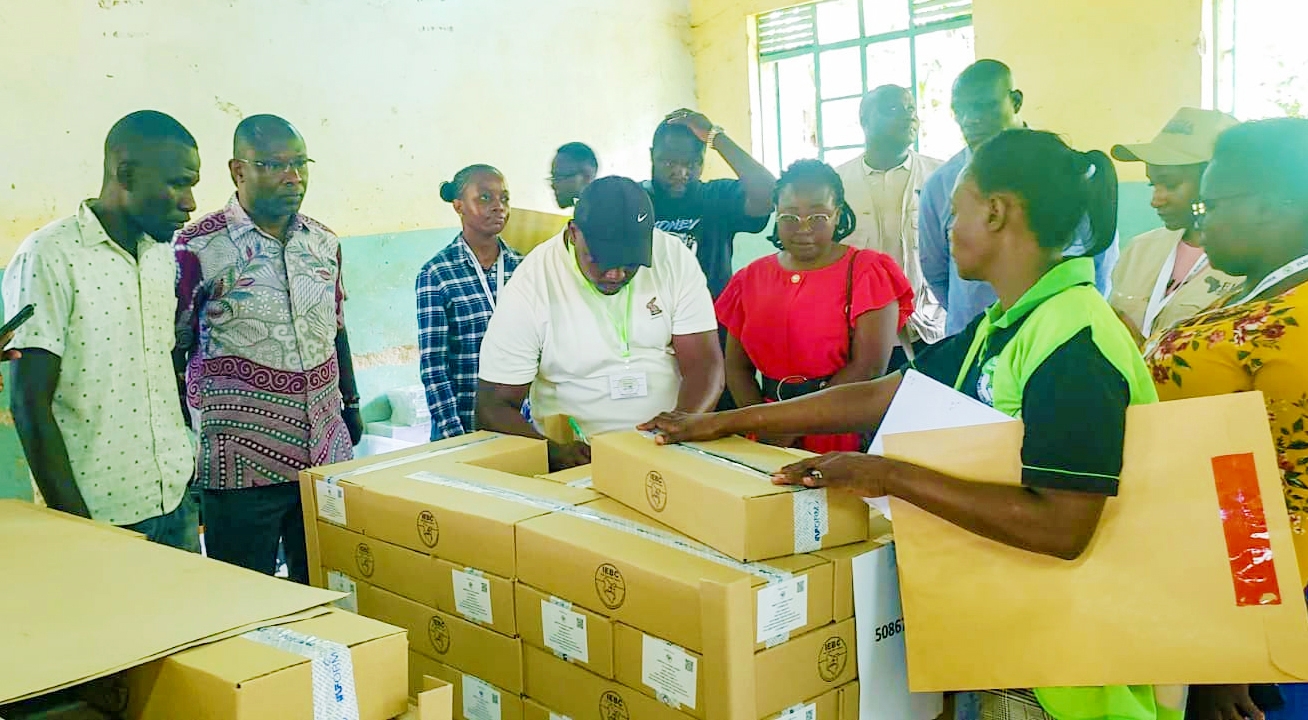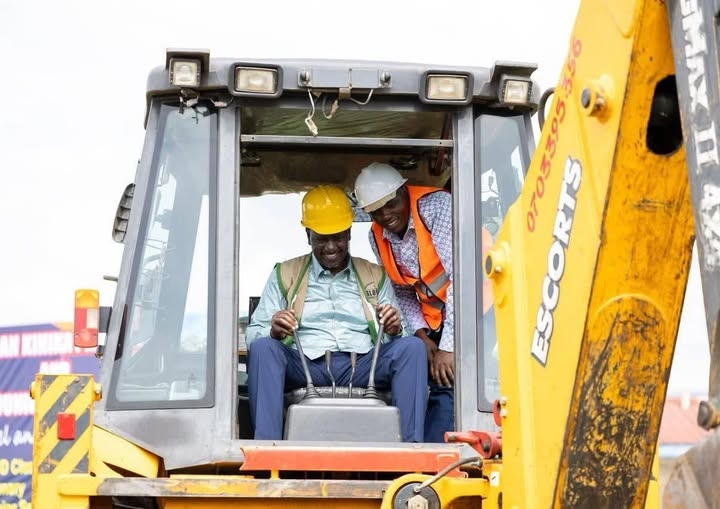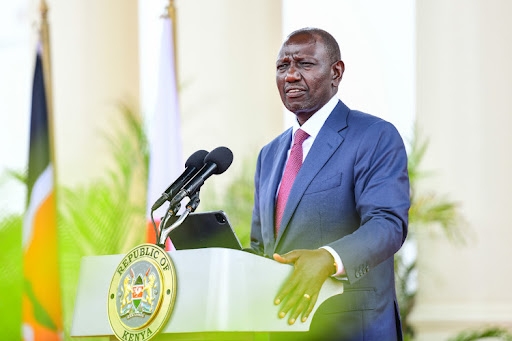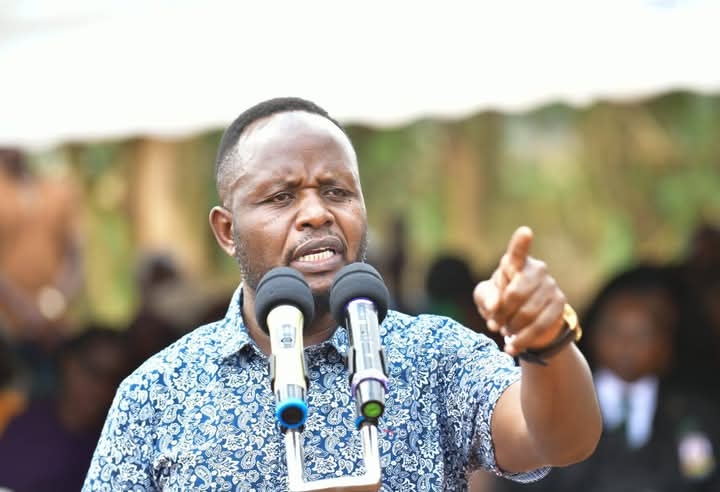On Saturday, Azimio leader Raila Odinga claimed that the ruling Kenya Kwanza alliance did not have a manifesto on affordable housing.
Raila alleged that the government stole the affordable housing ideas that it is implementing from the Azimio manifesto but faulted it for a wrong implementation model.
On Sunday, President William Ruto affirmed that Kenya Kwanza had a detailed manifesto on affordable housing ahead of the 2022 general election.
Both Kenya Kwanza and Azimio promised to establish a Housing Fund to facilitate the purchase of affordable houses.
However, neither of them proposed to impose a housing levy to finance the construction or the purchase of affordable homes.
Here is a detailed analysis of what both Azimio and Kenya Kwanza manifestos said about the affordable housing agenda.
Kenya Kwanza manifesto on housing
Housing is enshrined in the constitution as one of the basic social and economic rights, to wit, the right to “accessible and adequate housing, and to reasonable standards of sanitation” (Art. 43(b)).
The requirement for new urban housing is estimated at 250,000 units per year, against production of 50,000 units, translating to a deficit of 200,000 units.
The cumulative deficit is estimated at two million units.
As a result, more than 60 per cent of urban Kenyans are living in slums and other low-quality housing without adequate sanitation, undermining their dignity and exposing them to health hazards.
This is also a reflection of the bias towards upper-income housing.
Of the 50,000 units being produced, only two percent i.e. 1000 units are classified as affordable housing.
Moreover, our rapid urbanisation rate at 4.4 per cent, equivalent to 500,000 new city dwellers a year, means that the housing supply is a moving target.
Kenya Kwanza’s commitment
The Kenya Kwanza housing commitment is to turn the housing challenge into an economic opportunity.
Next to agriculture, we see housing production as the sector that will create quality jobs for the 100,000 or so young people who are graduating from TVETs every year directly in the construction sector and indirectly through the production of building products.
We will:
- Increase the supply of new housing to 250,000 per annum and the percentage of affordable housing supply from 2 per cent to 50 per cent. We will achieve this by structuring affordable long-term housing finance schemes including a National Housing Fund and Cooperative Social Housing Schemes that will guarantee the offtake of houses from developers.
- Grow the number of mortgages from 30,000 to 1,000,000 by enabling low-cost mortgages of Sh10,000 and below possible.
- Strengthen Jua Kai industry capacity to produce high-quality construction products.
- Giving developers incentives to build more affordable housing.
Rural Housing and settlement
The right to housing as enshrined by the constitution is not limited to urban settlements.
Indeed the vast majority of Kenyans live in their owned rural homes.
That said, rural Kenya also has its fair share of land and settlement-related challenges, including landlessness, insecure land tenure, and notably the historical squatter problem in the Coast region.
Population pressure on land resources is manifested by land fragmentation, encroachment of forests and other ecologically sensitive areas and human-wildlife conflict. This is despite the country having a considerable amount of un and underutilised agricultural land.
Over the years administrative solutions such as limits on land subdivision, as well as ceilings on land ownership and taxing of idle land have been mooted.
Kenya Kwanza is persuaded that such measures should be a last resort, only if more friendly.
Kenya Kwanza’s commitment
Kenya Kwanza commits to establish a Settlement Fund similar to the one that was used to acquire land from settler farmers after independence.
In order to avoid ending up with the same problem of land fragmentation that we seek to solve.
To this end, the land purchased by the scheme will be subject to land use planning where beneficiaries will own transferable residential plots in the planned settlement, and have the right to lease non-transferable agricultural land.
Cost and Financing Sh150b.
Budget neutral, to be financed by pension funds (AUM currently Sh1.5 trillion+) and other investment funds, including the diaspora.
Azimio Manifesto on housing
Urbanisation is increasing due to rural-urban migration and population growth leading to a high demand for housing, and social, recreational and commercial amenities.
The high demand has outstretched the provision of the requisite infrastructure, social services and security.
Therefore, there is a need for a more deliberate and sustainable approach towards urbanisation.
Affordable housing is a fundamental human right guaranteed in the Constitution of Kenya 2010 and it is a pillar of human development.
Investment in housing impacts the national income by igniting and sustaining forward and backward linkages through additional investment in construction materials, transportation and related building materials.
It also spurs economic growth by providing labour-intensive jobs to many young people.
In the affordable housing sector, and Azimio government will seek more investments to ensure that the Article 43 right to accessible and adequate housing is realized progressively.
Rapid population growth, estimated annual rate of 8.3 per cent equals increased demand for adequate and affordable housing, infrastructure and related amenities.
As of 2017, there was an 80 per cent deficit in Kenya’s annual housing, there’s a demand of 250,000 units versus an estimated supply of 50,000.
Kenya’s cumulative housing deficit is approx. 1.8 million housing units.
Developers focus on the upper middle class leaving a shortage that is more acute for Kenyans in lower income segments, and the quality of what is available does not promote the standard of living that our citizens deserve. 56% urban population (approx 6.4M people) live in slums.
Our opportunities
1. Demand for increased social services including housing, schools and health facilities.
2. Increased attention to environmental protection to reduce pollution levels in cities and urban areas.
3. Increased need for security, safety, transport, infrastructure and services.
4. The need to guide urbanisation through urban land use planning and development control.
5. Availability of innovative financing instruments for urban development.
6. The opportunity to use housing to generate employment as it is a very labour-intensive sector. The construction of one housing unit can generate between 3 and 5 new jobs from other jurisdictions.
Our Commitment
1)Undertake systematic implementation of the national spatial plan and the national land use policy
2)Support county governments to develop collaborative and county-integrated spatial and land use plans to manage orderly development and urbanization.
3)Improve the quality of infrastructure and services including social housing in the informal settlements.
4) Identify innovative financing solutions for investment and development of sustainable infrastructure to enhance the social and economic viability of cities, urban areas and towns Strengthen urban governance institutions and their accountability to ensure efficient provision of basic services
5) Expand access to affordable housing by:
a) Supporting county governments to build new and decent social housing
b)Investing in the construction of affordable homes and provision of social services
c) Financing affordable homes through:
i)Establishing and structuring an appropriate Housing Fund for home purchase.
ii) Providing affordable long-term Tenant Purchase Schemes (TPS) to low-income earners through the Housing Fund.
iii). Establish the first homeowner's scheme for new job entrants and MSMEs startup owners.
iv) Structure affordable long-term credit for developers.
d) Promote access to appropriate, adequate and affordable low-cost housing in urban areas by:
i)Supporting local manufacture of construction materials
ii) Using appropriate low-cost construction technology and modern innovative building technologies.
e) Production of units at scale.
f) An enabling environment (facilitates innovation, embraces technology, and commercial arrangements) that can bring down the cost of construction.
g) Building settlements that are close to economic centres of activities and facilitate shorter commutes to work;
h) Access to amenities close to where people will live: schools, hospitals, playgrounds, markets, and transport corridors; and,
i) Planned mobility infrastructure: facilitate movement of people while limiting environmental impacts.
j) Government to subsidise the land cost to qualifying partners and investors for the development of affordable housing conditional on pricing at stated targets.
k) In these areas, the government also provides adequate bulk infrastructure:
i) Water and wastewater infrastructure;
ii) Road networks;
iii) On-grid and off-grid power, and renewable energy.
iv) Transport;
v) Gas reticulation;
vi) Telecommunication & Fibre Cable Internet
vii) Tax incentives focusing on cost of construction:
viii) 16 per cent VAT on construction inputs: exemption for affordable housing development schemes translating to 9 per cent reduction in construction costs;
ix) 15 per cent corporate tax for developers with projects producing at least 100 affordable housing units;
x) Reduction of import duties for AHP construction inputs
xi) Affordable mortgage solutions:
L) Recapaitalise Kenya Mortgage Refinancing Company (KMRC) to continue working with the banks and other qualified financial institutions to specifically, enhance the affordability of mortgages by refinancing existing and future loan portfolios to the affordable housing segment and support secondary liquidity/ refinancing in the affordable mortgages segment.
M) Incentives toward homeownership:
i) Zero rating of stamp duty for first-time homebuyers
ii) Tax relief of up to Sh150,000 annually for savings in an approved Homeowners Savings Plan, including withdrawals to pay for a home. Reduced tax liability while saving for a home
iii) Tax relief on interests paid on a mortgage up to a maximum of Sh300,000 p.a, 15 per cent tax relief on contributions to the National Housing Development Plan
iv) Continue with pensions policy: changes to the Retirement Benefits Act have now allowed pension contributors to access up to 40 per cent of their savings for payments towards the purchase of a home.

















